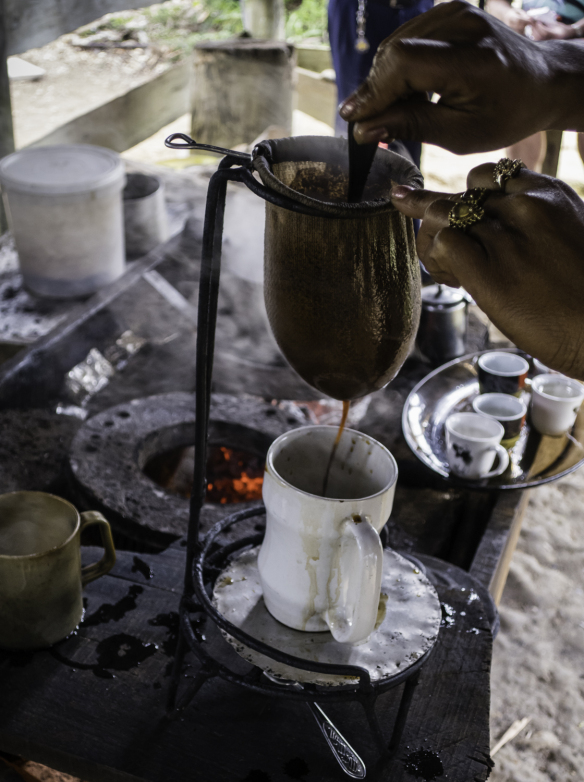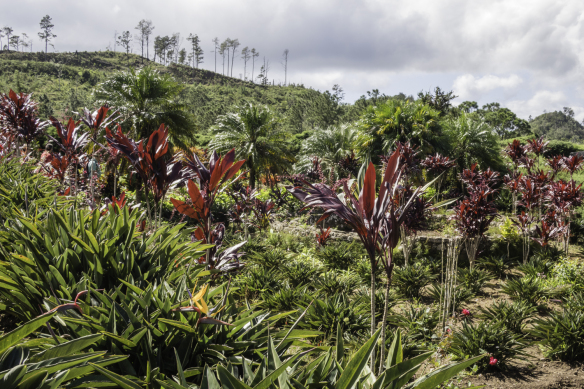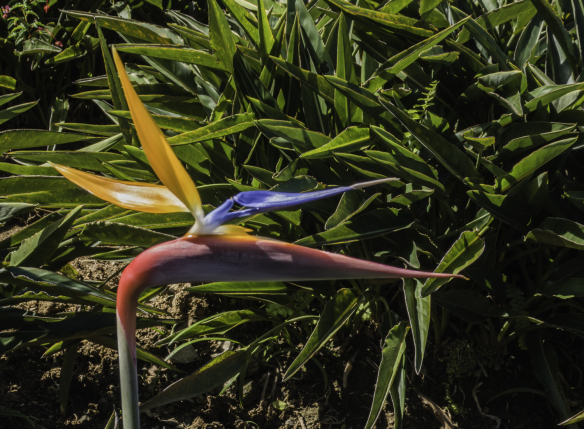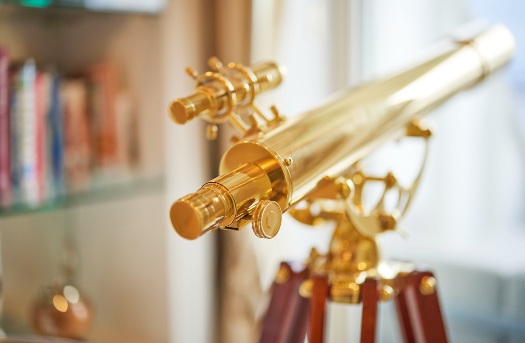Gran Parque Nacional Sierra Maestra, Santiago de Cuba
 A view of the Caribbean Sea from near a summit on our jeep ride up the Gran Parque Nacional Sierra Maestra Mountains
A view of the Caribbean Sea from near a summit on our jeep ride up the Gran Parque Nacional Sierra Maestra Mountains
From our pier near downtown Santiago de Cuba, we were driven in a jeep about an hour-and-a-half into the surrounding mountains with stunning landscapes. Stretching across much of the southern coast, Gran Parque Nacional Sierra Maestra boasts exceptional land and seascapes, from its wave-swept shoreline to steep ravines, rugged peaks and remote sugar cane fields farmed for generations by the same families. The park is also home to a World Heritage Site celebrating the region’s earliest coffee plantations, exemplified by its traditional platforms used to dry the beans. At the summit of the mist-shrouded Sierra Maestra Mountains we explored, with a local guide, the historically significant remnants of one of Cuba’s first coffee plantations.
The mountain range is where some of the finest Arabica coffee beans can be found. Not always a peaceful site, its history includes guerrilla warfare and was a refuge for Cuban rebels since the 1500s. From the coffee plantation, we drove to Jardín Ave del Paraíso (Bird of Paradise Garden). A specialist guided us on a walk through the lush ferns, orchids, bromeliads, and a rainbow of tropical plants in the beautiful, representative botanical garden. Afterward, following our jeep drive back down from the mountains, we enjoyed lunch at Km 0, one of the city’s paladares (employer-owned, rather than state-owned restaurants) that served typical Cuban dishes.
 A traditional concrete drying platform for drying coffee beans in front of the proprietor’s home at the oldest coffee plantation in the Gran Parque Nacional Sierra Maestra
A traditional concrete drying platform for drying coffee beans in front of the proprietor’s home at the oldest coffee plantation in the Gran Parque Nacional Sierra Maestra
 The proprietor’s home at the oldest coffee plantation in the Gran Parque Nacional Sierra Maestra
The proprietor’s home at the oldest coffee plantation in the Gran Parque Nacional Sierra Maestra
 The outdoor circular platform for crushing the dried coffee beans (the long wooden rod was pulled in a circle by a horse with a stone wheel in the track cracking the beans)
The outdoor circular platform for crushing the dried coffee beans (the long wooden rod was pulled in a circle by a horse with a stone wheel in the track cracking the beans)
 Only one slave quarters building remains at the coffee plantation
Only one slave quarters building remains at the coffee plantation
 Locally grown and roasted coffee beans making a cup of drip coffee at a roadside stand on the summit of the Gran Parque Nacional Sierra Maestra
Locally grown and roasted coffee beans making a cup of drip coffee at a roadside stand on the summit of the Gran Parque Nacional Sierra Maestra
 The Jardín Ave del Paraíso (Bird of Paradise Garden) was planted with lush ferns, orchids, bromeliads and a rainbow of tropical plants
The Jardín Ave del Paraíso (Bird of Paradise Garden) was planted with lush ferns, orchids, bromeliads and a rainbow of tropical plants
Sadly, this was the last day of our trip to Cuba. Looking back, our overall impression is one of a beautiful lush tropical small island country filled with friendly, entrepreneurial, hopeful people from a wide range of backgrounds from Africa, Europe, and the Caribbean. Virtually everyone we saw or met was friendly and accommodating to visitors, proud of their culture. The music, art, dance, and food that we experienced reflected the peoples’ love of life. We look forward to a return visit and to the day when the United States restores a fully open relationship with Cuba.
 A bird of paradise flower in the Jardín Ave del Paraíso (Bird of Paradise Garden)
A bird of paradise flower in the Jardín Ave del Paraíso (Bird of Paradise Garden)
Ready to learn more?
Determine whether life aboard The World is the right fit for you. Talk to one of our Residential Advisors today to learn more about this unique lifestyle, details of upcoming Journeys and Expeditions, and ownership opportunities.



